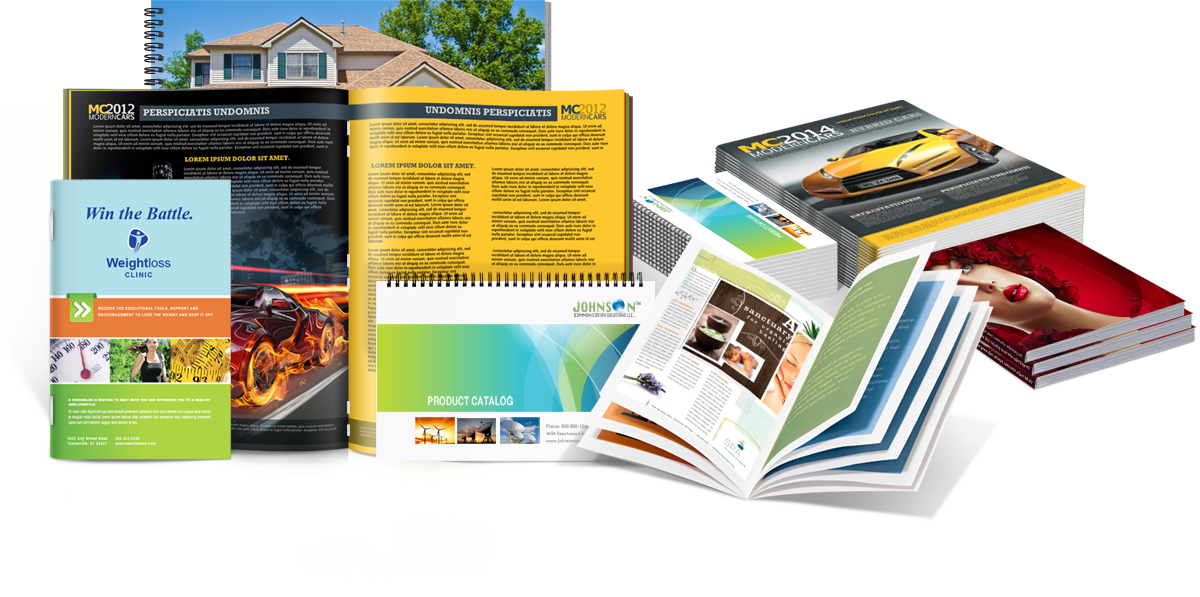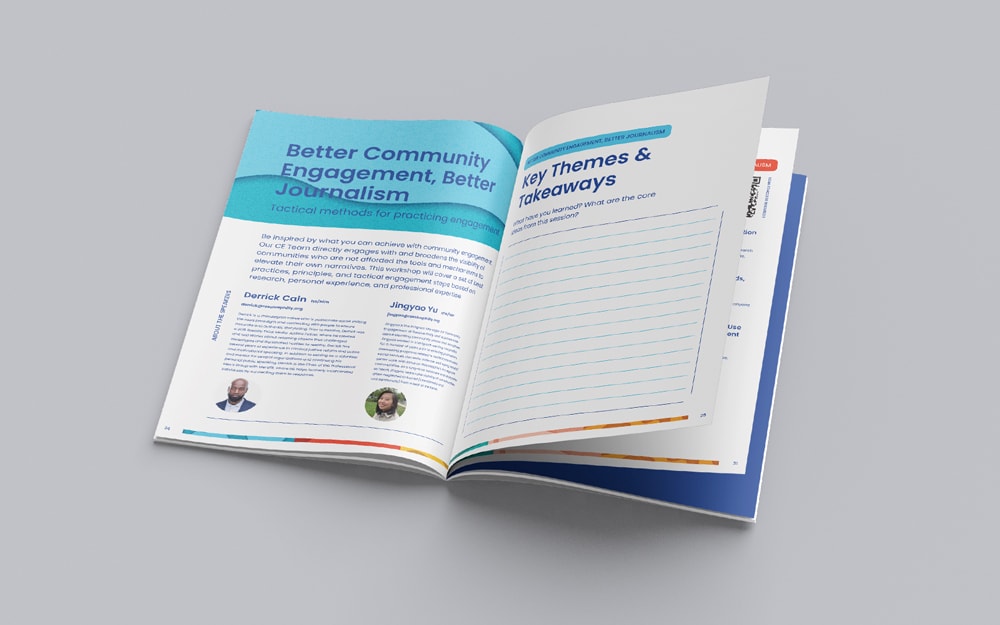The Essential Overview to Recognizing Brochure Printing Options and Techniques
The process of brochure printing includes multiple considerations that can greatly influence the last product. From selecting the proper format and size to recognizing the subtleties of binding methods, each option plays a vital function. In addition, elements such as paper supply and printing methods further affect the efficiency of the booklet. As one navigates these alternatives, it becomes crucial to realize exactly how they adjoin and what that suggests for the total outcome.
Comprehending Brochure Dimensions and layouts
When taking into consideration brochure printing, understanding the various formats and dimensions readily available is vital for accomplishing the desired presentation. Pamphlets can be generated in numerous styles, including saddle-stitched, spiral-bound, and perfect-bound, each offering distinct advantages. Usual sizes vary from conventional letter (8.5 x 11 inches) to smaller sized alternatives like A5 (5.8 x 8.3 inches), permitting versatility based upon web content and target audience.Selecting the suitable size can influence both the format and reader engagement. Larger sizes may fit visually driven content, while smaller formats might be more user-friendly and portable. Furthermore, the number of web pages influences the selection of binding approach, as thicker booklets may require tougher bindings. Inevitably, understanding these aspects permits a more tailored approach, making sure that the end product straightens with the desired message and visual, improving the overall efficiency of the communication.
Selecting the Right Paper Supply

Binding Techniques: Options and Considerations
When it pertains to binding approaches for booklets, numerous alternatives are readily available, each with unique benefits. Saddle stitch binding supplies an affordable remedy for thinner booklets, while best binding techniques give a more sleek look for thicker magazines. Wire-O binding attracts attention for its durability and ease of usage, making it excellent for documents that call for versatility.
Saddle Stitch Binding
Saddle stitch binding uses a affordable and useful option for constructing booklets, making it a preferred choice among organizations and authors. This binding method entails folding sheets of paper in fifty percent and stapling them along the fold line, creating a cool and organized appearance. Normally suitable for pamphlets with a lower page count, saddle sewing is optimal for magazines, brochures, and training products. The simpleness of this technique enables quick manufacturing and is usually favored for brief runs or promotional products. Nevertheless, it is vital to keep in mind that saddle stitch binding may not appropriate for thicker pamphlets, as the back might not hold up under enhanced weight. On the whole, it continues to be a trustworthy choice for numerous printing projects.
Perfect Binding Strategies
Perfect binding is a widely used strategy that offers a specialist and sleek finish to publications and brochures. This approach entails gluing the web pages together at the spinal column making use of a strong adhesive, permitting for a tidy side and the capability to hold a bigger variety of web pages compared to saddle sewing. Perfect binding is specifically ideal for thicker brochures, such as magazines and yearly reports, where a durable, flat back is wanted. Additionally, it uses the alternative for a printed cover that can be developed to improve aesthetic charm. However, considerations such as page matter, paper weight, and the meant use of the brochure must be taken right into account, as they can impact toughness and total high quality.
Wire-O Binding Choices
Wire-O binding, known for its sturdiness and flexibility, uses an exceptional choice for pamphlets that require simple page turning and a specialist look. This binding method employs a series of metal loops that hold web pages safely, allowing them to lie level when open. It is especially suitable for directories, guidebooks, and presentations due to its robust nature. Wire-O binding is available in different colors and sizes, accommodating different page matters and thicknesses. Additionally, it allows the inclusion of covers and tabs, improving the pamphlet's general aesthetic. Considerations for Wire-O binding include the option of cable shade, the size of the loops, and the degree of personalization wanted, all of which can exceptionally influence the last product's appearance and functionality.
Digital vs. Offset Printing: Which Is Best for You?
When choosing a printing approach for brochures, understanding the differences in between electronic and balance out printing is crucial. Digital printing utilizes contemporary technology to generate premium prints rapidly and cost effectively, making it optimal for short runs or projects calling for quick turnaround times. It allows for modification, supplying the ability to print on-demand with marginal waste.In contrast, counter printing is a typical technique that masters generating huge amounts with constant high quality. It entails moving ink from a plate to a rubber covering, then to the paper, which causes dynamic colors and specific details. However, counter printing generally needs longer arrangement times and is a lot more economical for bigger volumes.Ultimately, the selection between electronic and counter printing depends upon task demands, budget, and wanted amount. For small, time-sensitive tasks, digital could be the very best selection, while balanced out may be better for bigger, premium manufacturings.

Creating Your Pamphlet: Tips and Finest Practices
When making a pamphlet, careful focus to layout, font option, and color usage can considerably boost its performance. A well-structured design overviews the viewers's eye, while appropriate font styles ensure readability and share the wanted tone. Furthermore, reliable use of color can stimulate emotions and emphasize key information, making the total design much more impactful.
Selecting the Right Layout
Exactly how can one successfully choose the right layout for a booklet? Initially, it is vital to review the pamphlet's purpose and target market. A clean, organized layout enhances readability and involvement. Utilizing a grid system can aid in lining up components constantly, creating a professional appearance. Additionally, including visual power structure with varying dimensions and placements of photos and message can lead the visitor's eye and highlight key info. It is likewise crucial to leave adequate white space, which stops overcrowding and enables for better emphasis. Ultimately, testing various formats through mock-ups can supply insight right into exactly how the design does in real-world situations, ensuring that the final product satisfies both practical and visual requirements.
Choosing Proper Typefaces
A well-chosen font can greatly enhance the total design of a booklet, matching the format and reinforcing the content's message. The option of fonts ought to think about readability, specifically for body text, as it ensures the information is easily accessible to all viewers. Sans-serif font styles are usually liked for electronic styles, while serif font styles can provide a typical feeling in printed materials. It's recommended to limit font selections to 2 or three to preserve aesthetic coherence. Additionally, font style dimension plays a crucial function; headings need to be not overwhelming however distinct, while body text must fit for reading. When selecting font styles, positioning with the brochure's motif and target market is necessary for reliable communication and visual appeal.
Reliable Usage of Color
Shade functions as an effective tool in brochure design, directing and forming perceptions visitor feelings. It can evoke sensations of exhilaration, depend on, or calmness, depending on the hues picked. Developers need to take into consideration color concept principles, guaranteeing that the selected scheme straightens with the pamphlet's message and target audience. For example, using warm colors like red and orange can create seriousness, while cooler tones like environment-friendly and blue foster tranquility.Additionally, contrast plays an important function; complementary colors can improve readability and aesthetic allure. Consistency in color use across web pages additionally strengthens brand identity and communication. Ultimately, reliable color application not only captures interest however additionally enhances the brochure's function, making it a crucial aspect of successful design.
Completing Touches: Coatings and Special Impacts
While several consider the material and design of a brochure one of the most important elements, the completing touches, such as layers and unique impacts, play an essential duty in enhancing its overall charm. Coatings can provide security and sturdiness, ensuring that the booklet endures deterioration. Matte finishes supply an innovative, non-reflective surface area, while shiny layers can make shades show up more appealing and lively. Unique effects, like embossing or foil stamping, include a tactile measurement that can develop a memorable perception. These strategies can highlight details areas, drawing interest to essential information or creating aesthetic interest. Furthermore, UV finish can provide a high-shine coating that raises the overall look.Together, these finishing touches not only boost the brochure's visual however additionally interact professionalism and focus to detail, ultimately leaving a long lasting influence on the visit homepage reader.
Expense Considerations for Pamphlet Printing
Recognizing the different price factors to consider for pamphlet printing is vital for services and organizations intending to enhance their budgets. Secret variables influencing prices include the selection of binding, ink, and paper approaches. Better products, such as premium paper or specialized inks, typically boost the total cost. In addition, the size and web page matter of the brochure play a considerable function; bigger brochures require more resources and time to produce.Another vital consideration is the printing method, whether digital or offset, as each has its very own pricing structure and suitability for various amounts. Companies should additionally factor in layout costs, which can vary based upon intricacy and the use of expert services. Ultimately, delivery and handling costs can add to the total, particularly for large orders. By reviewing these elements, companies can make educated decisions that align with their financial abilities while accomplishing the preferred high quality in their published materials.
Regularly Asked Concerns
What Are the Environmental Effects of Booklet Printing?
The ecological effects of brochure printing include logging from paper production, carbon exhausts from transportation, and waste generation from disposed of products - Booklet Printing. Lasting practices, such as using recycled paper and environmentally friendly inks, can minimize these effects
Exactly How Can I Ensure Color Precision in My Booklet?
To ensure shade accuracy in a brochure, one ought to use calibrated screens, employ specialist color accounts, carry out test prints, and select high-quality printing services that offer shade matching and proofing options for best outcomes.
What Is the Regular Turn-around Time for Booklet Printing?
The typical turnaround time for brochure printing differs depending on the intricacy and quantity - Booklet Printing. Normally, it ranges from a couple of days to two weeks, influenced by aspects such as publishing methods and finishing demands
Are There Minimum Order Quantities for Brochure Printing?

Can I Print Pamphlets in Numerous Languages?
Printing booklets in several languages is possible. Lots of printing solutions use alternatives for multilingual or bilingual formats, allowing for reliable interaction. Mindful planning assurances that develop elements suit various languages without compromising readability or aesthetic appeals. Additionally, elements such as paper supply and printing strategies additional affect the effectiveness of the booklet. When thinking about brochure printing, understanding you could look here the various layouts and sizes readily available is important for next accomplishing the preferred presentation. When choosing a printing technique for pamphlets, recognizing the distinctions between electronic and offset printing is necessary. In addition, the size and page count of the booklet play a significant duty; larger booklets require even more sources and time to produce.Another crucial consideration is the printing technique, whether electronic or balanced out, as each has its own prices framework and suitability for various quantities. The ecological effects of brochure printing consist of logging from paper manufacturing, carbon discharges from transportation, and waste generation from disposed of materials.